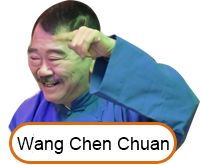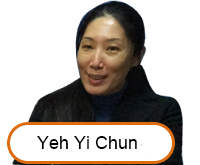|
Understanding the Art of Shuochang

The art of shuochang is a form of literature. It is an art form that utilizes ‘talking’ and ‘singing’ to retell history, folk tales, and literatures. It combines music, literature, and performing art. The talking aspect includes cross talks, pingshu, and storytelling without musical accompaniment. The singing aspect includes big drum, stringed instrument and calligraphy, and music and lyrics. These are performances with musical accompaniment.
What do the experts say?

Han Lin Director Chen-Chuan Wang
The art of shuochang is a form of colloquial literature that has been passed down from one generation to another. Cross talks, storytelling with clappers, and clapper talks are all different forms of shuochang. Therefore, the art of shuochang covers a very wide spectrum of performances.
Director Wang’s Learning Corner
Do you know what is the best language for performing cross talks?
The language most suitable for cross talks performance is the southern Fujian dialect because it has eight intonations, and it is also a very precise language.
During the Tang Dynasty, people spoke the southern Fujian dialect, and it is also the language used in composing poetries in that ear. For example, the poem ‘Seeking A Hermit But Not Seeing,’ the poem may lack its rhyming characteristic if it is read in Mandarin. But if one reads it in southern Fujian dialect, then the rhyming would return, and the readers could interpret the poem from a new perspective.
 TQT Director Yi-Chun Yeh
The art of shuochang is an ancient and traditional performance. This form of art utilizes language and texts to share issues with and describe stories to other people. In a way, it is like a person telling a story.
If there are many characters in a story, then it is up to the storyteller to enact all the characters. That’s why the art of shuochang requires the performer to possess solo performing talents and stage charms.
 Ms. Li:
The art of shuochang is also called ‘quyi.’ It is a traditional Chinese art form that has been around for centuries.
‘Quyi’ is the combination of talking and singing to express a story or a specific issue. It’s quite descriptive. The ‘third person’ storyteller must improvise by getting into and out of stories and act as if the story was coming from a ‘first person’ perspective. This would create an abstract and imaginary space for the audience to weave the story by themselves.
Unique Characteristics
Simple Form
The art  of shuochang originated in ancient China among ordinary people. Its form may seem simple, but it was easily understood and accepted by the people. There is no need for backdrops, lighting, or sound effects, and performers only use a handful of props or music instruments. The requirement for performers is low, one or two are needed to start a show. The success of the show depends on the performers, so most performers possess a strong character. of shuochang originated in ancient China among ordinary people. Its form may seem simple, but it was easily understood and accepted by the people. There is no need for backdrops, lighting, or sound effects, and performers only use a handful of props or music instruments. The requirement for performers is low, one or two are needed to start a show. The success of the show depends on the performers, so most performers possess a strong character.
Mainly Descriptive
The art of shuochang combines music, literature, and performance art, and the show is mostly about describing a story. Performers talk, sing, and imitate other characters. The focus of the show is on the story, character imitation is usually secondary, and that’s the most basic form of presentation for a shuochang show.
Single Performer Multiple Roles
The storyteller must get into or out of the story throughout the performance and imitate the characters or objects in the story to boost the theatric tension. In the meantime, the performer kick starts the audience’s imagination, and hence a single performer is required to fulfill multiple roles in the show. During the performance, the performers interact with the audience to make the show more enjoyable.
Strong Local Colors
The art of shuochang combines local cultures and farming village elements. For example, in the script ‘Metal Clapper Big Drum,’ legend has it that after the harvest,  farmers would pick up broken metal pieces from the field and use them as clappers to create a beat and tell a story. This form of shuochang is derived from the everyday lives of the people entertaining themselves. farmers would pick up broken metal pieces from the field and use them as clappers to create a beat and tell a story. This form of shuochang is derived from the everyday lives of the people entertaining themselves.
Blending and Assembling
The history of shuochang is long, and it forms subgenres due to differences in locality or culture. Different subgenres are usually quite accommodating of each other, and they blend well together. Each subgenre can be merged with other folk songs, drama, or formats of shuochang to create a new form of shuochang.
Drama vs. Shuochang
| |
Shuochang |
Drama |
| Literary Type |
Descriptive |
Representative |
| Uniqueness |
Third person perspective to describe the story |
Combines songs and dances to act out a story |
| Characters |
Performer assuming multiple roles |
Multiple performers assuming multiple roles |
| Format |
Simple format, relies mainly on the actor
|
Diverse formats, includes elements such as actors, theater, poetry, dance, music, representative perspective, acting out a story
|

Text: Nicole, the Original Artsy Shuochang Posse │ Source:
Baidu, Wiki │ Book: Interesting Shuochang: Chinese shuochang in Taiwan
|
